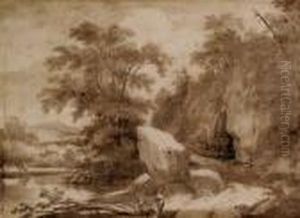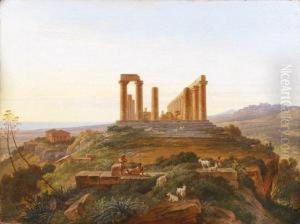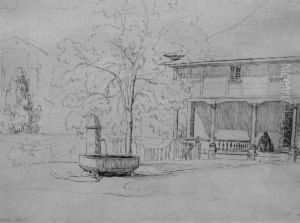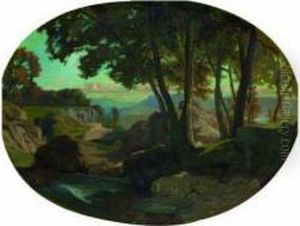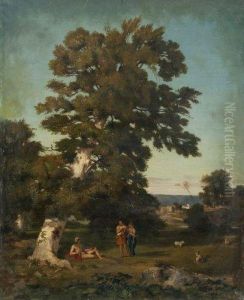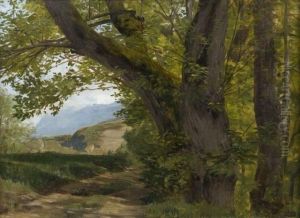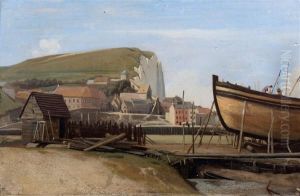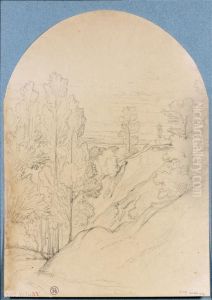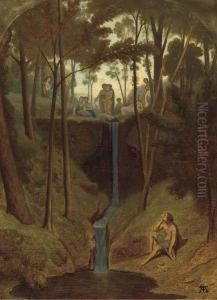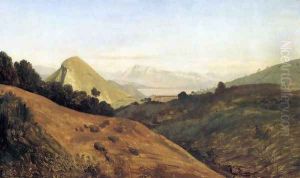Theodore Caruelle d' Aligny Paintings
Théodore Caruelle d'Aligny, born Claude-Félix-Théodore Caruelle on February 24, 1798, in Chaumes-en-Brie, France, was a notable landscape painter associated with the Barbizon school. He studied under the neoclassical landscape painters Jean-Victor Bertin and Anne-Louis Girodet-Trioson, which greatly influenced his early style.
During the 1820s, d'Aligny travelled extensively in France, Italy, and Switzerland, where he was inspired by the natural beauty of the landscapes. His travels significantly influenced his artistic development, shifting his focus towards a more romantic and realistic depiction of nature. He was particularly drawn to the forests of Fontainebleau, a common subject among the Barbizon painters, who were known for their naturalistic and plein air approach to painting.
D'Aligny exhibited his work at the Paris Salon, receiving a second-class medal in 1833. His meticulous and detailed landscapes often depicted the calm and serene aspects of nature, setting him apart from some of his contemporaries who focused on more dramatic scenes. He also taught at the École des Beaux-Arts in Lyon and later in Paris, influencing a new generation of landscape artists.
His contribution to landscape painting was recognized when he was awarded the Legion of Honour in 1842. Despite his association with the Barbizon school, d'Aligny's work retained a certain classical restraint and did not fully embrace the looser brushwork and vibrant light effects of some of his Barbizon peers.
Théodore Caruelle d'Aligny died on June 24, 1871, in Lyon, France. His works can be found in various museum collections, including the Louvre in Paris and the Metropolitan Museum of Art in New York, testifying to the enduring appreciation of his contribution to the landscape genre in 19th-century French art.

